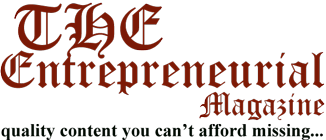By Paul Nyausaru
ORGANISATIONS are made up of people: people creating value through proven business processes, innovation, customer service, sales, and many other important activities. As an organisation strives to meet its business goals, it must make sure that it has a continuous and integrated process for recruiting, training, managing, supporting, and compensating these people. Let us then look at the process that makes up the Talent Management process.
Human Resource Planning: Integrated with the business plan, this process establishes human resource plans, hiring plans, compensation budgets and hiring targets for the year.
Recruiting: Through an integrated process of recruiting, assessment, evaluation, and hiring the business brings people into the organisation.
On boarding: The organisation must train and enable employees to become productive and integrated into the company more quickly.
Performance Management: by using the business plan, the organisation establishes processes to measure and manage employees. This is a complex process in itself that ensures that employees are paid according to output rather that coming to work
Training and Performance Support: this is a critical function where the organisation provides learning and development programs to all levels of the organisation. The idea is to identify any gaps in the performance of employees and come up with interventions.
Succession Planning: as the organisation evolves and changes, there is a continuous need to move people into new positions. Succession planning enables managers and individuals to identify the right candidates for a position. This function also must be aligned with the business plan to understand and meet requirements for key positions 3-5 years ahead. While this is often a process reserved for managers and executives, it is more commonly applied across the organisation.
Compensation and Benefits: this is an integral part of people management. Here the organisation tries to tie the compensation plan directly to performance management so that compensation, incentives, and benefits align with business goals and business execution.
Critical Skills Gap Analysis: this is a process that is often overlooked in many organisations. While often done on a project basis, it can be “business-critical.” For example, today organisations are facing large number of employees who are retiring. How do you identify the roles, individuals, and competencies which are leaving? What should you do to fill these gaps? In the centre of this process are important definitions and data: job roles, job descriptions, competency models, and learning content.
Additionally, Talent Management is a “forward-looking” function. Not only should talent management improve your organization’s flexibility and performance, it should give you the information and tools to plan for growth, change, acquisitions, and critical new product and service initiatives. The most critical aspects of talent management are as follows:
Talent Management requires integration and communication between existing HR-Learning and Development (L&D) functions.
Training can no longer be “left on an island.” The L&D organisation must align much more closely with the performance management and recruitment process. Training programs should be developed and updated to continuously address problems which surface in the performance management process. New employees who are hired because of certain competencies should see a set of training offerings which are complement and reinforce these competencies. Compensation program should naturally tie to the performance management process.
Competency management, a misunderstood and difficult part of training an HR, has become critical.
The job descriptions, roles, and competencies used for performance management are shared by L&D, recruiting, and succession planning. There are many techniques for effective use of competencies –
What does this mean to your Organisation? Talent Management is a powerful and important trend across HR and L&D. It changes the way you are organized, how you use technology, how your resources are allocated, and how you measure what you do. If you are a training manager, director, or CEO, talent management will impact your role. You may be asked to integrate your learning programs with the company’s performance management initiative.
What does this mean to your HRIS Strategy? Talent Management will also impact your systems strategy: For example, do you want a stand-alone LMS or should your LMS be integrated with the company’s performance management systems? What systems integration are the most important? How do you use competency models to tie learning to performance management? What “suite” products are mature enough for your particular organisation’s needs?
Paul Nyausaru is an HR Practitioner and leadership coach. For all your HR interventions and leadership development training you can get in touch with him on whatsapp/call +263774062756 or Email pnyausaru@gmail.com








